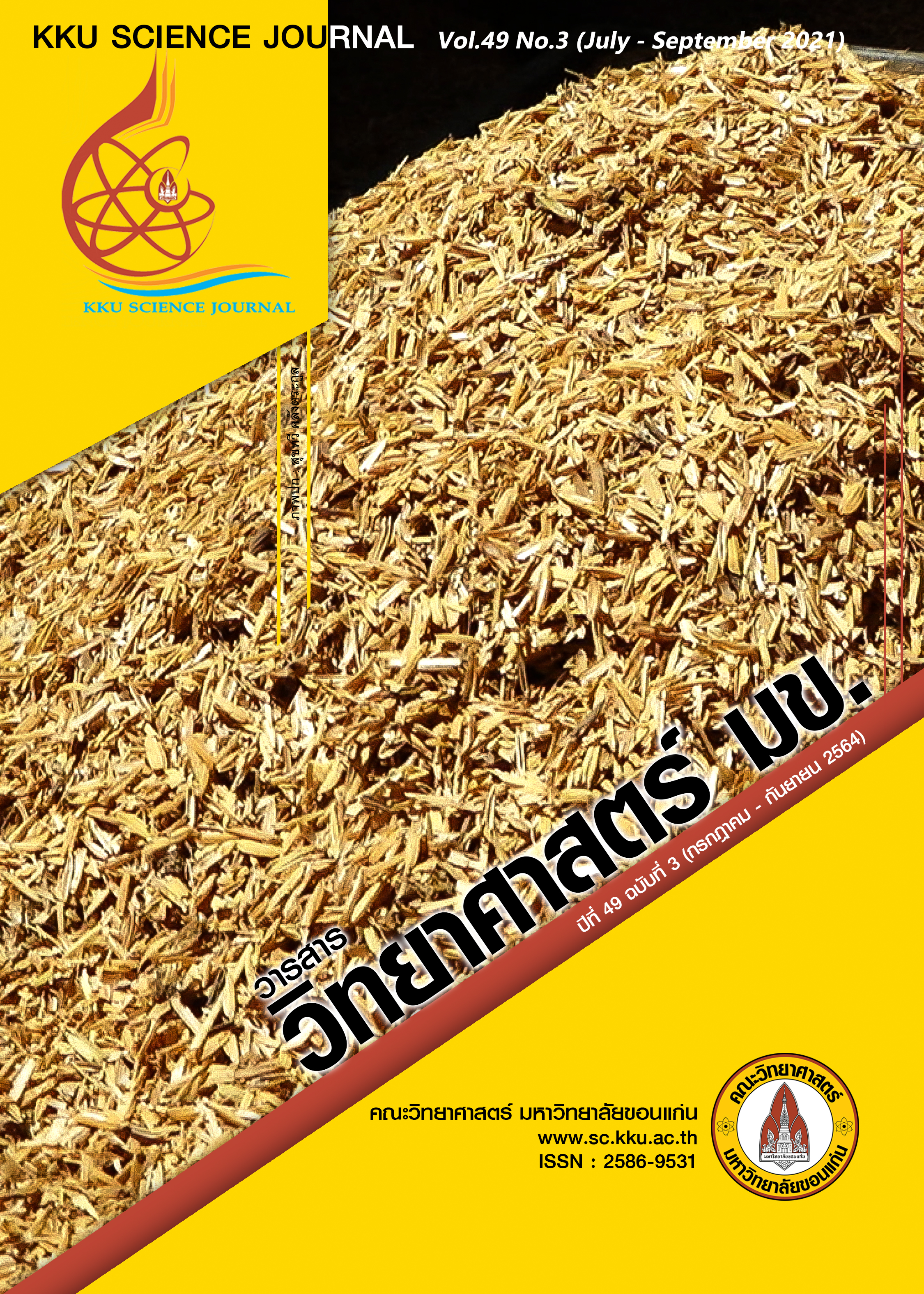Estimation of photosynthetically active radiation by Artificial intelligence from Sky view and zenith angle
Main Article Content
Abstract
In this study, the photosynthetically active radiation was estimated by using the artificial neural network (ANN) method based on the cloud index data which was calculated from sky view images by using convolutional neural network (CNN) method and zenith angle. All data in this study was collected from 4 main regions of Thailand including the northern region, Chiang Mai Meteorological Station, the north-eastern region, Ubon Ratchathani Meteorological Station, the central region, Department of Physics Faculty of Science Silpakorn University Nakhon Pathom, and the southern region, Meteorological Station in the south, east coast, Songkhla Province. The data was then created a model by using the ANN method. For the model testing, the data from the eastern region, Burapha University, Sakaeo Campus, was used. Therefore, the data for model construction and testing were not actually related. In the model construction for calculating of the cloud index, it was found that the accuracy of the model in learning rate was approximately of 87%. The could index and zenith angle data were then tested for the model in estimation of photosynthetic active radiation by using ANN method. The results showed that the cloud index calculation method by using CNN was the best method with the R2 of 0.80, the root square mean error (RMSE) of 19.3 %, and the mean bias error (MBE) of 1.18 %.
Article Details

This work is licensed under a Creative Commons Attribution-NonCommercial-NoDerivatives 4.0 International License.
References
Basheer, I. A. and Hajmeer, M. (2000). Artificial neural networks: fundamentals, computing, design, and Application. Journal of Microbiological Methods 43(1): 3-31.
Caya, M. V. C., Alcantara, J. T., Carlos, J. S. and Cereno, S. S. B. (2018). Photosynthetically Active Radiation (PAR) Sensor Using an Array of Light Sensors with the Integration of Data Logging for Agricultural Application. In: International Conference on Computer and Communication Systems (ICCCS). 377-381.
Frouin, R. and Murakami, H. (2007). Estimating photosynthetically available radiation at the ocean surface from ADEOS-II global imager data. Journal of Oceanography 63(2007): 493–503.
Iqbal, M. (1983). An Introduction to Solar Radiation. New York: Academic Press. Janjai, S., Wattan, R. and Sripradit, A. (2015). Modeling the ratio of photosynthetically active radiation to broadband global solar radiation using ground and satellite-based data in the tropics. Advances in Space Research 56(11): 2356-2364.
Kim, J., Lee, J. K. and Lee, K. M. (2016). Accurate Image Super-Resolution Using Very Deep Convolutional Networks. Proceedings of the IEEE Conference on Computer Vision and Pattern Recognition. 1646-1654.
Mathworks. (2019). Convolution neural networks, Available at: https://www.mathworks.com/solutions/deep-learning/convolutionalneural-network.html.
McCree, K. J. (1966). A solarimeter for measuring photosynthetically active radiation. Agricultural Meteorology 3(5): 353-366.
Tao, X., Liang, S., Wang, D., He, T. and Huang, C. (2018). Improving Satellite Estimates of the Fraction of Absorbed Photosynthetically Active Radiation Through Data Integration: Methodology and Validation. IEEE Transactions on Geoscience and Remote Sensing 56(4): 2107-2118.
Tkemaladze, G. Sh. and Makhashvili, K. A. (2016). Climate changes and photosynthesis. Annals of Agrarian Science 14(2): 119-126.


